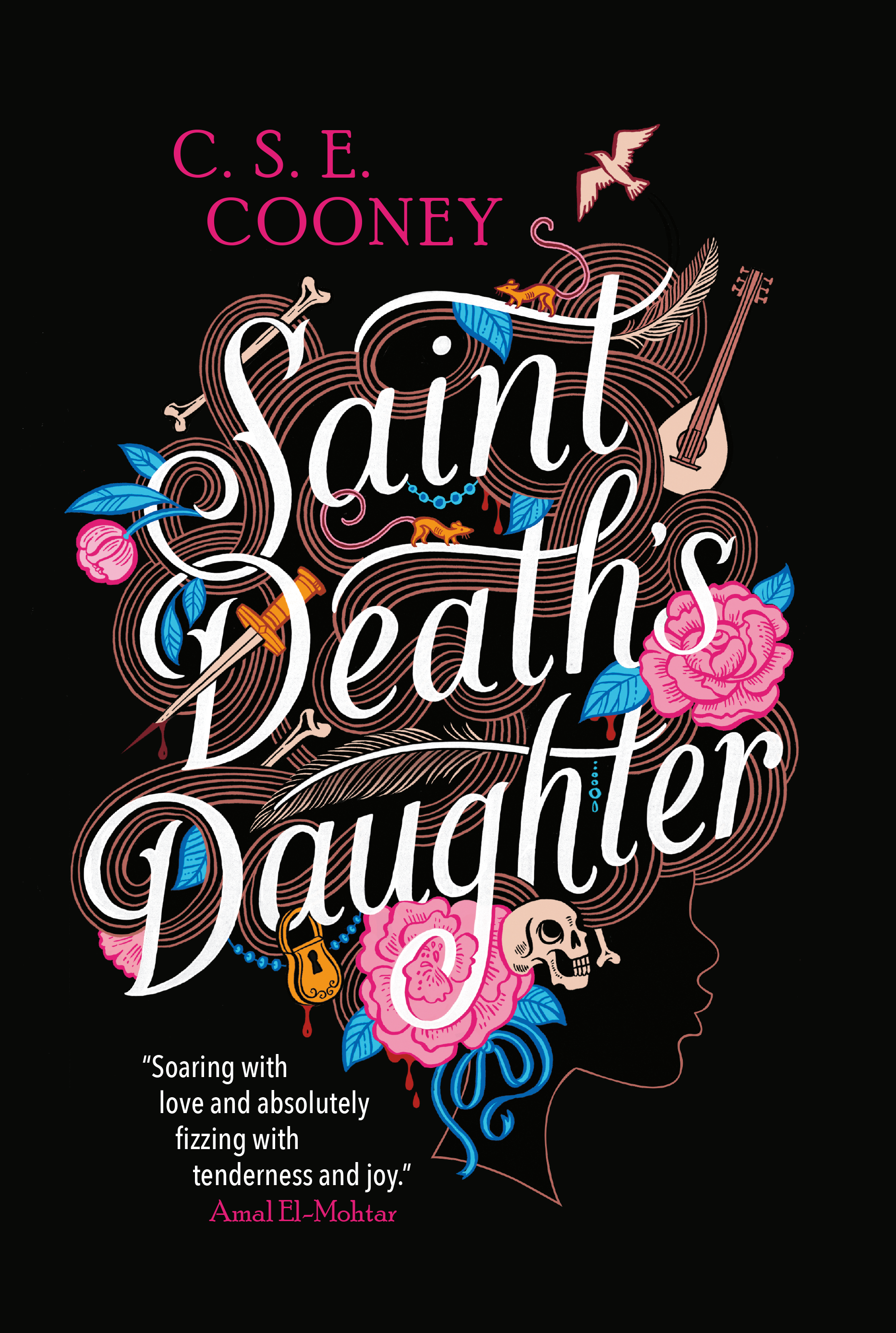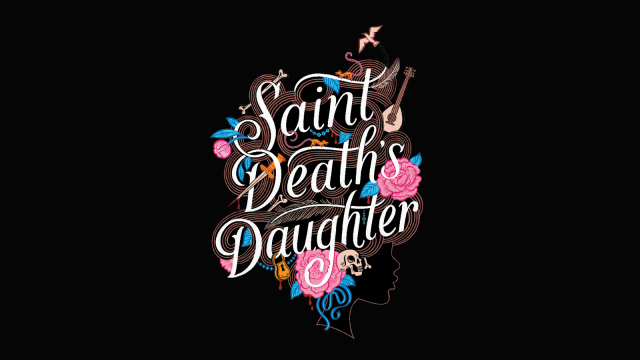My husband and I were at MoMA PS1 in 2021 when I saw her: Niki de Saint Phalle’s interpretation of Death. It was one of the small models of her gargantuan Tarot Garden installation that resides just outside Rome. Here was Death: a skull-faced woman, voluptuous and gold-skinned, riding a horse made of the midnight sky. The joy of it, the life of it, the bursting beauty of its colours and the dynamic nature of the posture, stunned me.
It reminded me of meeting the Death card in a Day of the Dead Tarot deck. All the figures of that deck were represented by skeletons, except for Death. She was, instead, a pregnant woman.
In Nnedi Okorafor’s Who Fears Death, violence and birth, death and pregnancy, and above all transformation abound, with the ferocity and vivid colour of a Niki de Saint Phalle sculpture.
Okorafor’s protagonist, Onyesonwu Ubaid is an Ewu girl, a child of violence: particularly, of the weaponised rape of a Nuru soldier of her Okeke mother. Onyesonwu — from whose name, “Who Fears Death,” the book takes its title — is a shape-changer (one of her shapes is that of a vulture), and a sorcerer who can manipulate matter and resurrect the dead. Upon the murder of her lover and the conception of their child, Onye works a great magic: killing all the fertile men in its radius and impregnating all the women. For this (spoilers!), she is caught and stoned to death.
Or is she? In re-writing the world, Onye also re-writes her own death, and instead transforms into a fire-spitting Kponyungo, a dragon-like creature of the desert. (Okorafor stated in a tweet that she borrowed the Kponyungo’s shape from a funeral mask.) Onye is not, perhaps, an obvious personification of Death, but she does seem — in Okorafor’s far-future, post-apocalyptic science fantasy — to embody many of the contrasting complexities of the ancient fertility/death goddesses found at the roots of many world religions.
One of the most recognisable, modern depictions of a female Death is Neil Gaiman’s Death of the Endless, a recurring character in his Sandman graphic novels. Her idiosyncratic look — goth-black clothes, silver ankh, and marking near her right eye — makes her incredibly easy for Sandman fans to cosplay (and therefore embody) Death. In the recently released audiobook, Death is voiced with joie de vivre (and a scratchy, sisterly, reassuringly warmth) by actor Kat Dennings. Elsewhere on Twitter, Neil Gaiman fans reminded me of his “Lady on the Grey,” the personification of Death in the Carnegie Medal and Newberry Award-winning The Graveyard Book.
In Rebecca Solnit’s City of Women from her atlas project Infinite Cities, all stops of the New York City subway system are renamed for great women in history. I feel that should some future cartographer ever make a subway map of all the female-presenting Death figures of the fantasy genre, then Terry Pratchett’s character Susan Sto Helit from his Discworld series would be just one stop away from Neil Gaiman’s Death of the Endless — not too far from Gilly the Perky Goth from Dork Tower! Miss Susan (“Susan Death”) is the adopted granddaughter of Death, who — at least for the plot of Soul Music — takes up Death’s own mantle. On our Map of Ladies Death, Death of the Endless and Susan Death would be two abutting neighbourhoods, two goth-girl psychopomps laid out side by side: skinny, of pale aspect, with a gravitas beyond their years.
The next stop after Susan Death might be Calliope Reaper-Jones, Amber Benson’s protagonist in the series of the same name, Death’s daughter, and CEO of Death, Inc., who wears power suits and works hard to stave off the zombie apocalypse. (And if she is Mister Death’s daughter, then the necromancer protagonist of my own novel, Saint Death’s Daughter, might be the next stop on our imaginary chthonic subway line… Although Lanie Stones isn’t literally Death’s daughter, just Her beloved acolyte.)
There are more Ladies Death and Death-adjacent female figures in fantasy than I can name, so I turned to social media. Friends reminded me to mention Sabriel, Liriel, and Clariel, of Garth Nix’s Old Kingdom series, Nancy from Seanan McGuire’s Wayward Children series — particularly Every Heart a Doorway, where she arrives at school after spending several years in the Halls of the Dead, Queen Achren from Lloyd Alexander’s Chronicles of Prydain (one of my favourite childhood villains!), Lady Taranis from Susan Cooper’s Seaward, and Greer Gilman’s Annis from Moonwise.
Though there are plenty of deadly females in fantasy films and TV who are, each in their way, Death-Bringers, there are not many who are Death personified. Santa Muerte on Penny Dreadful: City of Angels; the Mago in Hotel del Luna; the Princess in Jean Cocteau’s Orphée.
But the 80’s gives us plenty of wiggle room, if we’re looking personify Death in a certain kind of female form. There’s the Widow of the Web in Krull, who controls the Crystal Spider with her hourglass. There’s the Sorceress-Queen Bavmorda in Willow, with her gaunt frame, skeletal aspect, priestess robes, and spiked iron crown, who rules over ruthless armies and terrifying death dogs, and has no compunction sacrificing babies. There’s Mombi in Return to Oz (played by the same actress, Jean Marsh, who played Bavmorda), who takes heads for her collection and wears them interchangeably depending on her mood. Let us not forget the the Force-witch Charal in the Battle for Endor, who can shape-change into a raven (I mean, iconic!), or Disney’s own Maleficent (from the cartoon, I mean: pre-redemption), who takes her final form as a black dragon.
We would be remiss if we did not mention a few of the more eldritch female figures lurking in fable, myth, and urban legend. While they are not perhaps strict personifications of Death, they nonetheless remind us of the tattered veil between our world and the Land of the Dead. There are those who lure passersby to their deaths by trickery or enchantment. There are those who are, themselves, dead — often from violence or despair. There are those who appear at roadsides, or lost in the woods: mere hauntings, reminding us of our own mortality.
Imagine stops on our subway map named: Rusalka, Pichal Peri, La Llorona, Lamia, Empusai, Succubi, La Dame Belle Sans Merci. And, lest you fear we are running out, we can always turn to the aforementioned Death Goddesses of religion and myth, who have their own alphabetical listing on Wikipedia, from Akka to Tuonetar: a whole rabbit warren I am always eager to explore.

C.S.E. Cooney is the author of World Fantasy Award-winning Bone Swans: Stories and the Tor.com novella Desdemona and the Deep, among others. Find out more at csecooney.com or on twitter @csecooney.
Saint Death’s Daughter by C.S.E. Coney is out now in the U.S.; you can order a copy here.
Wondering where our RSS feed went? You can pick the new up one here.
